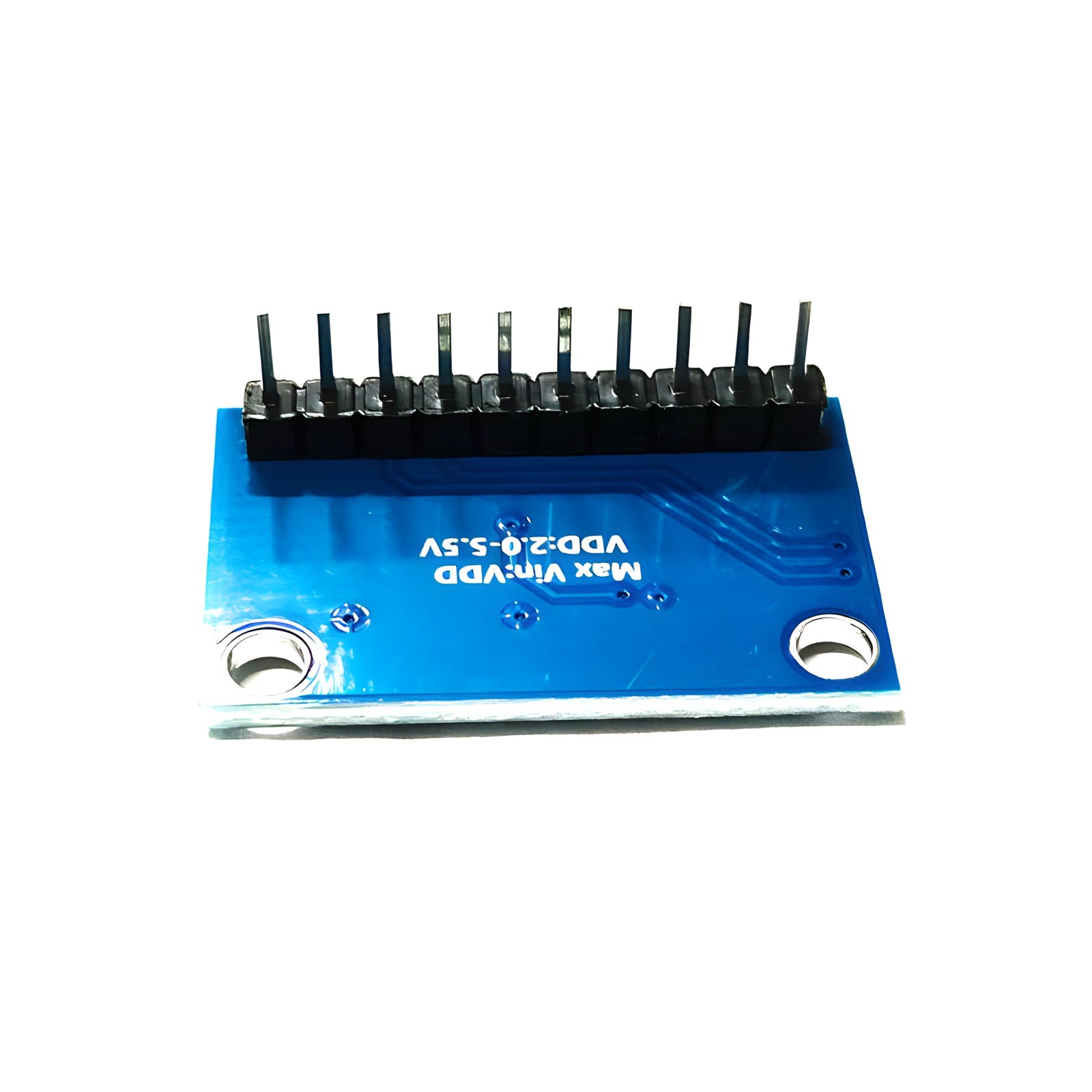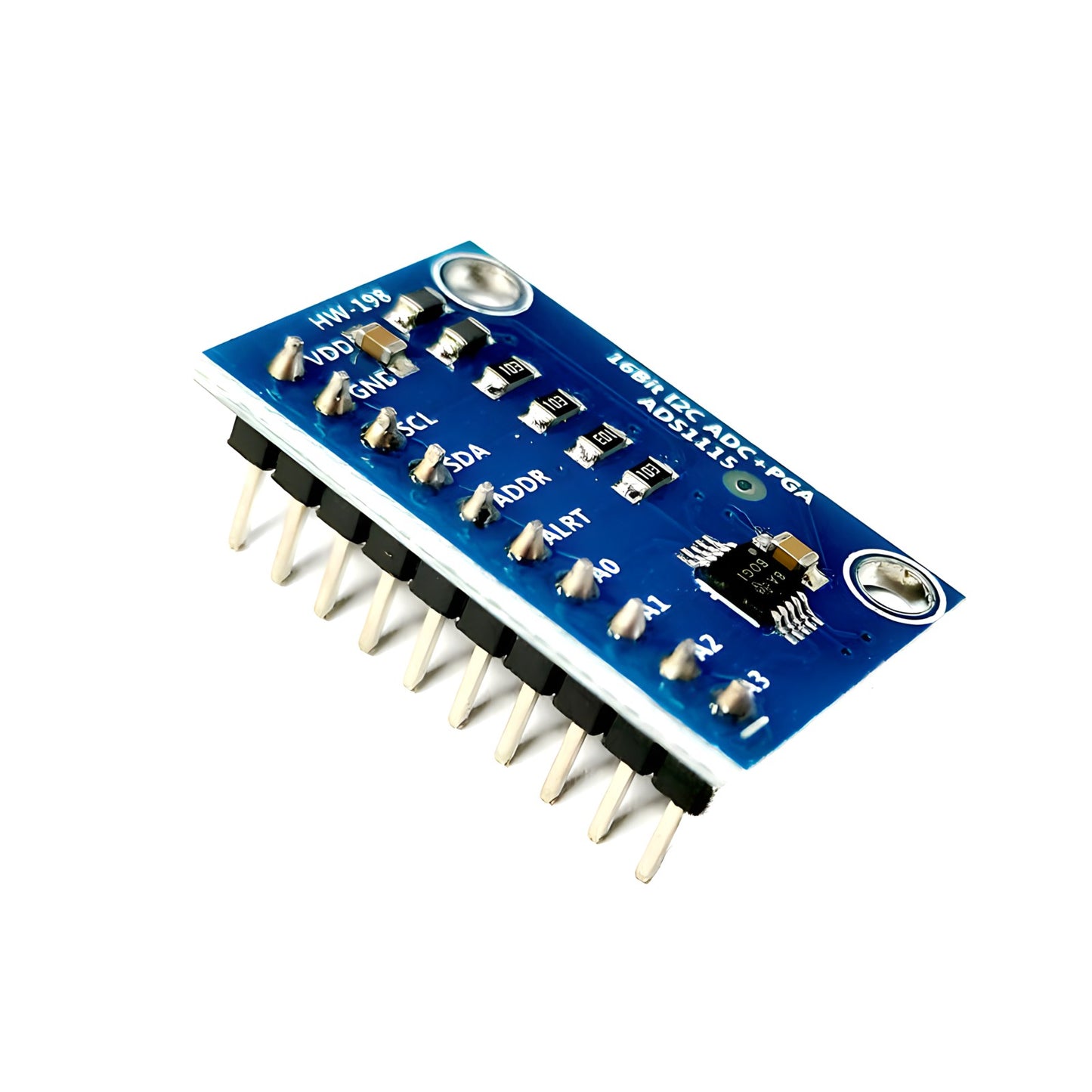
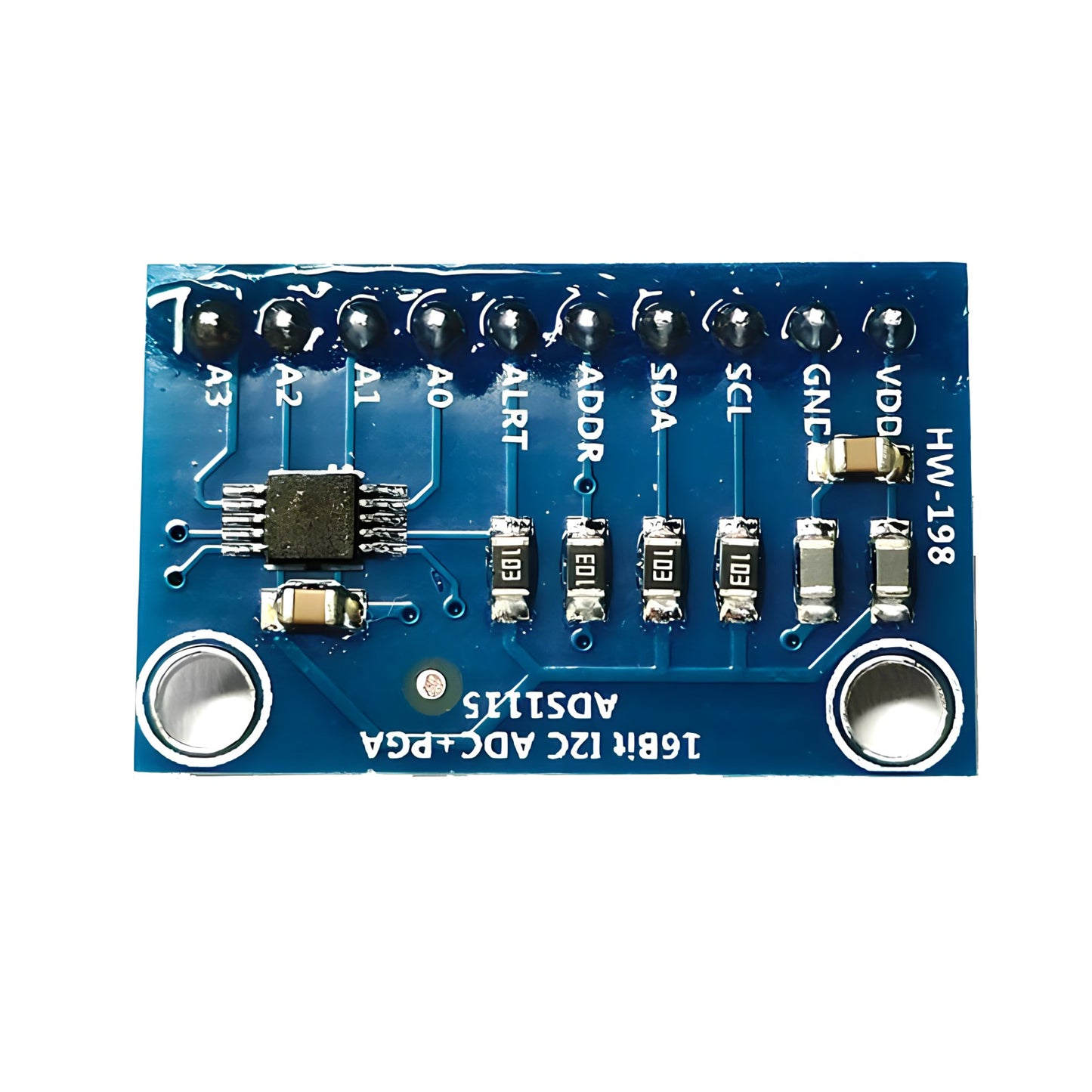
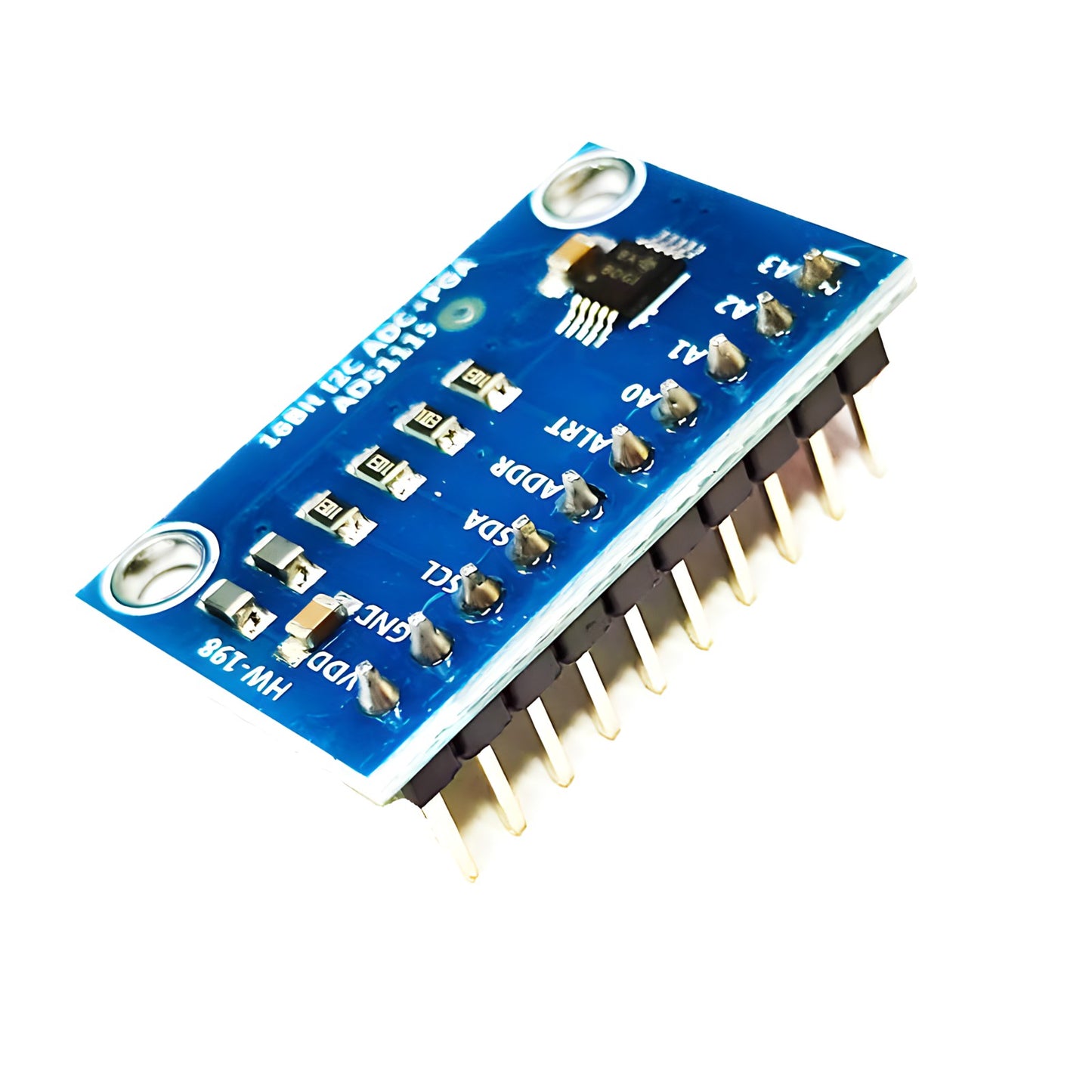
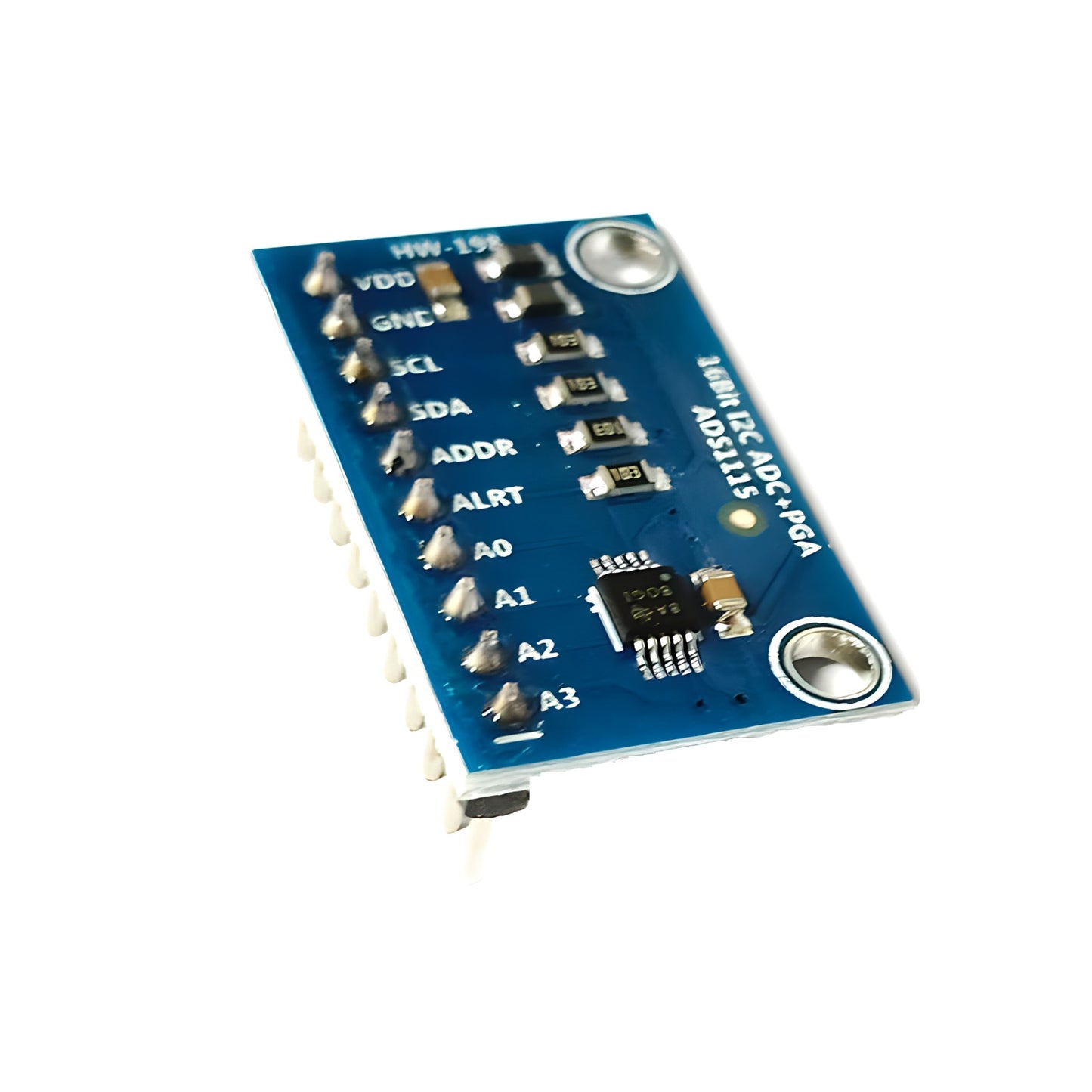
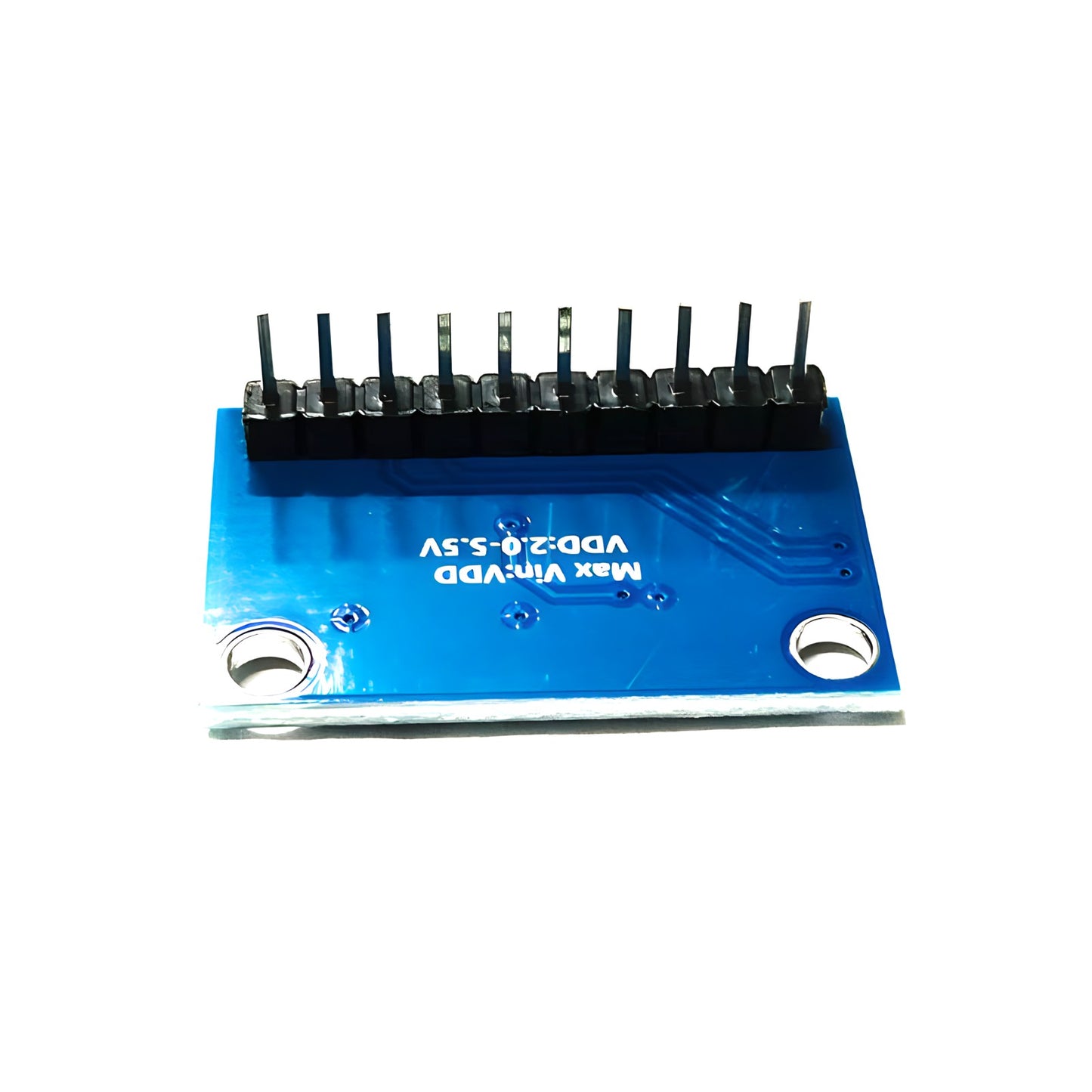
Customer Reviews
See what other customers have to say about their purchase.
Features:
- Plug-and-Play (Solderless): Includes 1 pre-soldered ADS1115 Analog to Digital Converter, ready to use! No soldering required—simply plug it into any pins or breadboard and start integrating precise analog-to-digital conversion into your projects effortlessly.
- Functionality: The ADS1115 is a high-precision ADC that excels in converting analog signals into digital data with remarkable accuracy. It's ideal for applications such as sensor interfacing, battery monitoring, and signal acquisition in electronic projects.
- Searchable on Amazon: ADC, Analog to Digital Converter, ADS1115, High-Precision ADC, Sensor Interface Module, Signal Acquisition Board
- Versatile Applications: Suitable for a wide range of applications, including IoT devices, environmental monitoring, industrial automation, and electronic prototyping.
- Compatibility: Compatible with popular platforms like Arduino, Raspberry Pi (including models like Pico and Pico W), and various microcontrollers. Supports I2C communication for seamless integration into your projects.
- Wide Operating Voltage Range: Operates at a voltage range of 2.0V to 5.5V, ensuring compatibility with various microcontrollers and SBCs.
- Output Data Rate (ODR): Offers selectable data rates from 8 SPS to 860 SPS, providing flexibility in data acquisition based on your project's requirements.
- Compact Design: Dimensions of 2.5 x 1.6 x 0.3cm (1” x 0.63" x 0.12”) make it a compact and space-efficient choice for your projects.
- Weight: Lightweight at approximately 1.5g, ensuring it won't add bulk to your projects.
No additional feature info available.
No documents available. Please contact us for more information.




